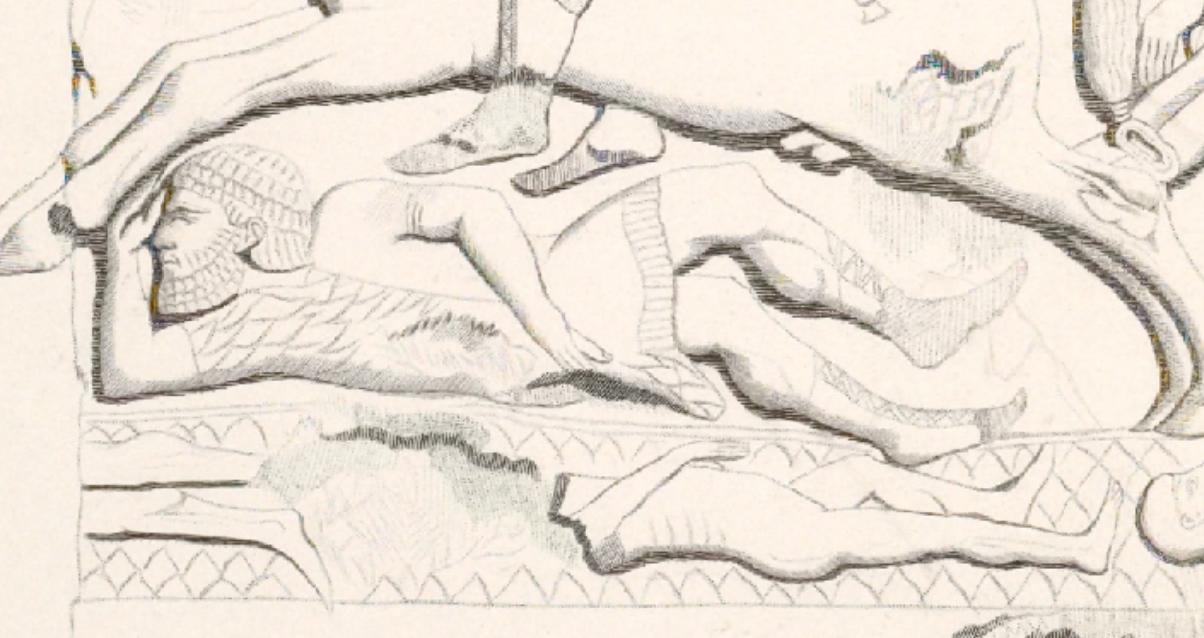Try Amazon Audible Premium Plus and Get Up to Two Free Audiobooks

Join Amazon Prime - Watch Thousands of Movies & TV Shows Anytime - Start Free Trial Now
Sculptures of Sargon II at Dur-Sharrukin (Khorsabad; 'Sargon's city'), Room 2
The Assyrians capture Ganguhtu, Bit Bagaya, and Kiundau, and accept the surrender of Tikrakka, in 716BC
Detail of Bas Relief 19

Source: Monument de Ninive, découvert et décrit par M.P.E. Botta; mesuré et dessiné par M.E. Flandin. 1849, NYPL
Wäfler 1975, vol. 1, p.267 observed that the convention of distinguishing easterners by skin cloaks occurred already in the Akkadian period in the well-known stele of Naram-Sin where they are worn by defeated easterners, the Lullubi.
In Sargon's room 2, skin cloaks are worn by the inhabitants of the labeled cities of Harhar, Tikrakka, Bīt-Bagaia, Kiesm, and Ganguhtu; in Room 13, Muşaşir; and in Room 14, Pazai (for references, see chapter 2, note 26). So consistent was the use of this convention, that skin cloaks were considered sufficient identification for the unlabeled easterners in the tribute processions from Room 10 (Botta and Flandin 1849, vol 2, pls. 122-136).
Note 14, p307, Sennacherib's "Palace Without Rival" at Nineveh By John Malcolm Russell
Note the boots worn by the west Zagros Iranians.
Detail of Bas Relief 18, Sculptures of Sargon II at Khorsabad, Room 2 - The Assyrians capture Ganguhtu, Bit Bagaya, and Kiundau, and accept the surrender of Tikrakka, in 716BC
Bas Relief 22, Sculptures of Sargon II at Khorsabad, Room 2 - The Assyrians capture Ganguhtu, Bit Bagaya, and Kiundau, and accept the surrender of Tikrakka, in 716BC
See also Urartu: The Kingdom of Van, Opposition for the Assyrians by Clive Naseby
Ancient Illustrations of Costume and Soldiers

